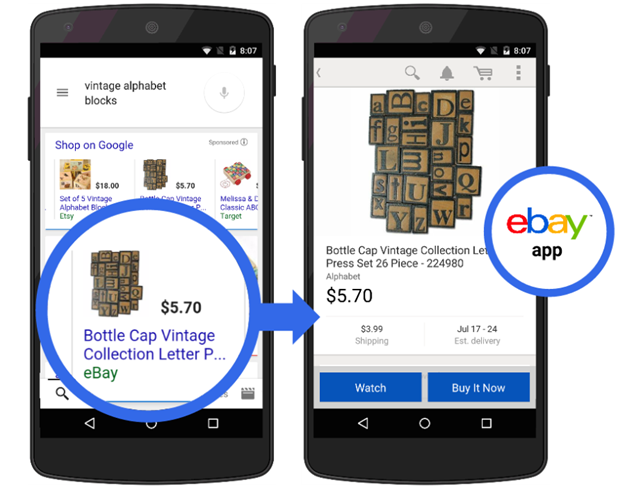Overview
Google is a lot of things to people. It is a search engine, an email provider, social network, and now with their new “Buy on Google” button a quasi-ecommerce store.
As e-commerce continues to reshape the way we shop, mastering the nuances of Product Listing Ads (PLAs) and mobile commerce has become paramount. In our commitment to keeping you at the forefront of digital trends, this blog post is dedicated to unraveling the latest developments in PLA and mobile shopping strategies.
Google is allowing advertisers the ability to sell physical goods via the Product Listing Ads on Google Shopping. The shopping center on Google has long been a paid section where searchers can find goods online and in retail outlets near them.
Building upon our foundation of knowledge, we delve deeper into the evolving landscape of visual advertising and mobile user behavior. From PLA enhancements to mobile-responsive design insights, we provide a holistic view of leveraging these tools to capture attention, drive conversions, and enhance user experiences.

What does it all mean?
With these new feature, merchants now have the ability to sell their goods directly through Google.
Furthermore, users can now see more PLA’s directly from their phones. By incorporating this into the carousel of products that Google shows searchers, they can significantly impact not only the reach of the products, but also the conversion rates as well.
It is proven statistically that the more pages a user has to click through, the lower the conversion rate. By adding this button Google helps their sellers and encourages more sales to go through the site. That is data they can later use to determine how many people purchase through the search giant.
How this works
The one thing to keep in mind that this is still in the development stages. The functionality is available shortly on Android, and will be available on iOS in the next few months.
Additionally, Google Now works with local GPS to indicate when you are near a particular store that you like. The basic information for the store appears in your Google Now, including store hours, phone number, address, specific sales, and any loyalty card information.
You can even browse the store inventory from Google Now before going over to the store. Talk about a great for shoppers to save time at the mall. They no longer have to wander peruse products. Unless of course that is part of the fun of shopping.
This is also a boon for retailer. Retail outlets have the ability to target clients before they walk in the door. Google essentially created a geo-fence around the entire consumer population carrying mobile devices to purchase at the store they pass.
Geo-fences are skyrocketing in popularity, because they increase click through to sales websites from 15-25%. This is in comparison to a 1% click through rate on traditional websites.
This could go up even further now that websites do not even have to leave Google to make their purchase on their phone.
Along with the geo locational adds is a price drop card. The Google Now price drop card shows significant price decreases on a product a consumer already viewed. This would work similar to a retargeted ad on Google or Facebook.
Users are more apt to return to a website that has an established relationship with them already. The price cards provide savings to buyers who passed up on previous information.
The final change that Google is making is allowing apps to deep link product listing ads directly to their own shopping apps.
Currently ads go only to websites, and not mobile apps. That includes mobile apps in the Google Play Store. With the surge in mobile search traffic, it makes sense to provide options for mobile searchers to check out the ads on ecommerce sites websites.
Since most larger websites have apps for their site it is more important for them to direct mobile traffic to these apps. That way it provides a smoother transition from browsing to purchasing products.
Gogle is testing this out with a small group of retailers, including eBay, Flipkart, and Zalando. This should be available to a wider audience in the next few months.
Final Thoughts
The ability for shops to sell their products directly on Google is a game changer. By doing so, they are now competing directly against Amazon for control of the ecommerce niche.
For consumers, this should make buying easier. Traditionally, consumers have been lazy about clicking multiple buttons. By selling products directly on Google, businesses have the ability to increase their conversion rates.
If your business wants to increase their conversion rates through PLA, then feel free to contact Shout for more information. Let us know how we can help you with your product listing ads and mobile shopping experience.
